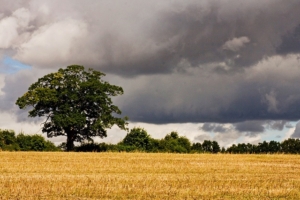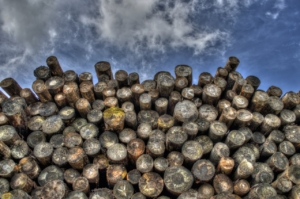Turning Wood Scrap into Useful Adhesive Tape
Turning Wood Scrap into Useful Adhesive Tape
Adhesive tape is generally made from petroleum-based products, but engineers working at the University of Delaware have figured out a way to use wood-based products to make adhesive tape of comparable quality, by using a throwaway component of processed wood. Paper manufacturers usually just discard lignin, since it has no value in the paper-making process, so until now it has generally ended up in landfills, or it has been burned as a heat source. Lignin is an inexpensive material which is very plentiful and sustainable, so it provides scientists with a perfect opportunity to create a useful product by recycling one which previously had little value.
How it Works
Lignin is itself a natural polymer, and it shares some physical properties with the petroleum-based polymers which are currently used to make adhesive tape, and many other products as well. Since it has this similar molecular structure, scientists theorized that it could be used make some of the same products that petroleum derivatives are used for. To prove their theory, they had to find a way to systematically break down the lignin, which is extremely tough, because its chemical structure is very complicated.
After a little trial and error, scientists found a way to break down lignin using a commercially available catalyst, and once they had isolated the polymers in lignin, it was only a matter of creating new and useful polymers. The entire process consisted of a series of steps which called for separation, purifying, recombining into new polymers, and characterizing the new polymers, in order to create wood-based versions of commercially used products. During testing of their new wood-based adhesive tape, researchers found that it was just as sticky as some of the most popular brands of adhesive tape on the market today, without any additives being included in the development process.
Other possibilities
The University of Delaware engineers used lignin from poplar trees throughout all of their experimentation, but it was always apparent that using lignin from other trees as well could produce a wider range of other products. Even limiting tree selection to those which have high lignin content, there are still many tree types suitable for creating products which rival petroleum-based versions.
Of course, this is a highly desirable outcome, since trees are a renewable source whereas fossil fuels are not, and the wood-based versions are also much friendlier to the environment. Scientists fully expect to be able to produce other kinds of tapes such as electrical tape, duct tape, bandages, and sticky notes, but there is optimism about creating a whole new range of products as well.
For instance, products like seals, gaskets, rubber bands, O-rings, and even tires for automobiles are within the realm of possibility for wood-based versions to be manufactured. What chemical engineering has achieved so far using a discarded component of paper and pulp processing, has been remarkable, and it is highly likely that even greater accomplishments are on the horizon.
Nature’s Packaging is committed to the increased use of wood products, especially wood packaging, from sustainably managed forests. Forests sequester carbon from the atmosphere and this helps reverse the impact of climate change. Wood products are recyclable and continue to store carbon throughout their life cycle.



















